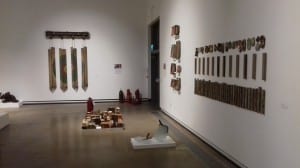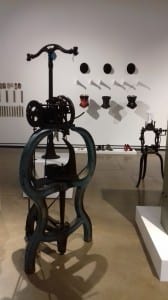*****Please scroll down for Diane’s thoughts on the course at the end of this article*****
Alumni of the course, Diane E. Hall talks about her recent curatorial project.
‘ Leicester: Memories of Industry’ Exhibition.
In 2015, I proposed a solo exhibition of drawings in the original ‘Balcony Gallery’ at the University of Leicester, Attenborough Art Centre. I was fortunate as it was accepted and coincided with the opening of three new contemporary galleries at the Centre. The Arts Officer who curates shows at the Centre liked the way I had curated it and in 2016 asked if I would be interested in creating a show, in two of the new galleries, to help celebrate the Centre’s 20th anniversary in 2017. The other two g8artists who I collaborate with were approached. We relished the challenge so the research and hard work began!
For about 10 years, g8artists have been supported and worked with The National Forest, whose work involved replanting forest on disused mining sites, so the confluence of industry and the natural environment was central to our work. The Centre indicated there was Heritage Lottery funding available from the City of Leicester, ‘Story of Parks Project’. Researching the EXPO 72 archive held at the University showed that in 1972 ‘The British Association for the Advancement of Science’ had had its annual meeting in Leicester. To publicise the event the City celebrated its industry, science and commercial history in Abbey Park. We saw the Parks as the lungs of the Industrial city, several of which, were funded by industrialists. Thus, the initial EXPO72 inspiration was fundamental and funding agreed for ‘Park Life’ in Gallery 2, related to the history of Leicester’s green urban spaces.
For Gallery 1, ‘People, Patterns and Process’ with the emphasise on industry, we decided to explore the City and County Museum Collections. We visited several large warehouses full of artefacts, many being industrial. The objects from diverse industries were kept in storage alongside each other creating ambiguities and questions about their use. These chance encounters of objects resonated with us as artists and added a depth of meaning and surprise that we wanted to continue and convey within the exhibition. The layers of small and large objects from such diverse industries was fascinating. Many were ambiguous sculptural forms that posed questions about origin, materials and use, some lost in time. They provoked memories of Leicester’s heritage and the narrative of human experience showed through the marks of use, the patina and wear and tear. We each had our favourite items as well as joint choices that fitted our identified brief. We were very excited and fascinated by what we saw and benefitted enormously from the knowledge and enthusiasm of the museum archivists.
Thus, the ‘Leicester: Memories of Industry’ exhibition was born. Bringing together seldom-seen artefacts and contemporary art in unexpected ways, provoking interaction between science, technology, philosophy and art. We sought a further £15,00 from the Arts Council Funding for the’ ‘People, Patterns and Process’ in the larger gallery and overall show. This was awarded and enabled us to develop our own work and commission other artists to collaborate with us.
A sound piece using natural, industrial sounds and clips from retired industrialists was created by an artist we commissioned. This is transmitted through both galleries. She also collaborated with a musician to create a sound performance. In addition, a drone artist created a visual picture of the park including images of a mown installation by one of g8. Numerous educational events have been planned, including a 3 day drawing workshop in the Park to grow the audience for the show and the Centre, creative opportunities for people with Dementia, Family workshops and the Young Ambassadors 14-19year olds Group are benefitting from our show.
For my own work, I wanted to express the idea that although industry brought and still brings wealth and employment to the City it also has huge consequences. During the 19th and early 20th century the pollution was very evident with poor air quality, flooding and remnants of mining leaving the countryside ugly and the ground poisoned. My series of collages expressed these ideas. Also, work includes the repetition and materials used in industrial processes – a ceramic, wood, metal, glass etc. It enabled me to further develop my interests in mining, started during my MA. I selected artefacts at the Museum Stores items that I could curate alongside my art so the integration of contemporary art with industrial objects was palpable. For example, in one store I noticed a small pile of green fabric amongst old mining boots and helmets. The archivist had no idea what it was. We pulled it out and a mining rescue suit was revealed. Next to it stood a red canister and large hardened wading boots with similar associations. The group hardly evident on the shelf were very powerful carrying so much history, narrative and human endeavour.
Including coal, I wanted to show the supporting industries such as wool for socks, lighting and bricks for factories and workers housing. One Store housed shelves of bricks made by small brick companies, using local clays they showed an amazing array of colour, size and design! Nicholas Serota visited the show in his capacity as Chair of the Arts Council loved this display. The bricks I’d displayed on a low plinth, still in bundles, with labels and string still attached. It looked rather like a city scape. Hanging on the wall behind were the jigs, moulds for making bricks, looking like contemporary 3D art work and enhancing a piece of my own work which I showed beside it. Of course, the association with Carl Andre which we had used amused him and when photographs were called for he insisted the bricks were included.
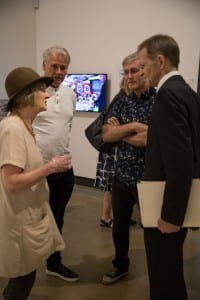
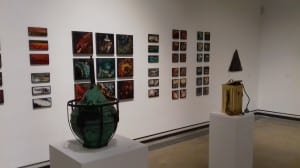
We expected to be introduced to Sir Nicholas then for him to do a quick tour, but he stayed, wanting to know how we had conceived the show and decisions we had made while curating it. He then asked us to show him around discussing our work and ideas. He liked the way the artefacts and art worked together and the spaces we had ‘built’ into the exhibition as part of the curating process. We had had a plan for curating from the beginning. After seeing the Museum Stores we decided to choose some significant large machinery and smaller items to display as a long group down the centre of the gallery, with our work and other items at the sides. After choosing our initial group of artefacts, we visited the stores several times to check and visually record the artefacts, noting the archival numbers and locations. It was not always straight forward as a museum had recently closed in the County leaving a mass of items to accommodate or return to the City collection. Consequently, items we originally identified for our show became trapped behind other items and virtually impossible to retrieve. However, alternatives were found and vulnerable &/or heavy pieces identified so eventually specialist movers could be contacted to bring them to the Centre for a specified date. We were fortunate, the Curator who we worked with in our team sorted the insurance, costs and contract issues.
A plan was made of how we intended to curate the show, although this was modified as we progressed. When the objects finally arrived, it was like Xmas as we unwrapped artefacts. We had never seen the items together before. It was fascinating how they had been wrapped by archivists at the museum and their knowledge and help was invaluable. Also, we worked with two technicians. It would have been easy to leave them to hang to our directions but I was aware of their considerable talent and how much I could learn from them. Also, to make decisions about location, height of plinths, how to show a piece, for example how to hang the brick jigs, through discussion we realised a means that worked so well. Prior to our exhibition had been a Ryan Gander show where he used Arts Council Collection pieces with his own. The way it was being dismantled and packed for transportation after that show was enlightening and informative. This was going on during the first few days of our three-week hanging period.
I had tried to get my own art work completed and packed ready for transportation ahead of time so I could leave time for the curating aspect of the show.
We arranged the objects and our own work as planned. Several of our items of work were left out, this was anticipated as having more than required seemed essential, although painful to leave out it was crucial for an overall visual effect. Finally, it was decided to clear the room of all working supporting and packing materials so the overall space could be considered. We then looked again at the central ‘block’ of artefacts and removed all the items and plinths to the sides of the room, replacing them gradually into the long central area but leaving appropriate space around pieces and allowing more of a flow through the area. As a result, a few objects we really loved were excluded so that a cohesive but parred back show was achieved. N.Serota was interested and appeared to applaud the way we had worked to arranged and curate the exhibition.
Curating a show in a high-level gallery was enormously rewarding. I learnt so much about planning, from researching and constantly evaluation the financial and organisational elements. Working as a team, the Centre’s curator devised a timetable which we all worked to and numerous meetings with him and g8artists was essential. It was still complex as we worked with professionals from the City and County Museums, parks, photographers, publicity staff, commissioned artists, education outreach tutors etc. Understand their constraints and keeping everyone informed was essential.
In addition, publicity materials, educational booklets, preview preparations and educational course had to be written and agreed. The Centre had staff who did a number of these tasks but as the lead artists I felt it all had to be checked as a high level of professionalism was required. Discussions with the publicity team etc. were undertaken, filming took place in the Museum Stores and each of us was interviewed about our work for a video presentation for the show.
Doing my MA at University of Lincoln enabled me to have the skills and confidence to undertake a major exhibition. The course was designed so research went alongside my creative practice. This was essential experience for a complex show such as this. I could consider the organisational aspect but continue to be thoughtful about my own practice. Also, learning so much about the curating aspects of showing while doing my MA made me so much more aware of the issues involved. Although I had hung and seen numerous exhibitions over the past 20 years the course encouraged me to look at the way an exhibition had been hung, to collect ideas and consider space. I remember going to the Venice Biennale and making notes about the height of plinths, the space around sculpture and the way colours worked together. I’ve continued to observe these aspects and the way ideas change within the art world.
During my MA final show, I was asked to consider parring back my work, leaving out elements so negative spaces enhanced the work. It taught me so much about evaluating contemporary art, identifying what was valuable and questioning and evaluate my own work and to strive to develop it to a high level.
Somethings didn’t work for the show, others were developments from previous pieces. My MA taught me that my practice is a continuous process with ideas and concerns I have about society reoccurring as part of my expression. The written work undertaken during the MA had been invaluable too. I’ve written for funding in the past but having the artistic vocabulary and historical source material to express your ideas is invaluable.
Clearly, we learnt an enormous amount while dealing with this complex show, it was a challenge but hugely enjoyable and rewarding. I have so many ideas for future work and collaboration. The Museum archivists, for example, were very excited when they saw what seemed like insignificant items on their shelves transformed when brought into a gallery setting and juxtaposed with items from diverse industries. They offered to work with us anytime indicating the exhibition had given them new ideas and opportunities to show artefacts which where seldom seen.
***********************End of article******************************************
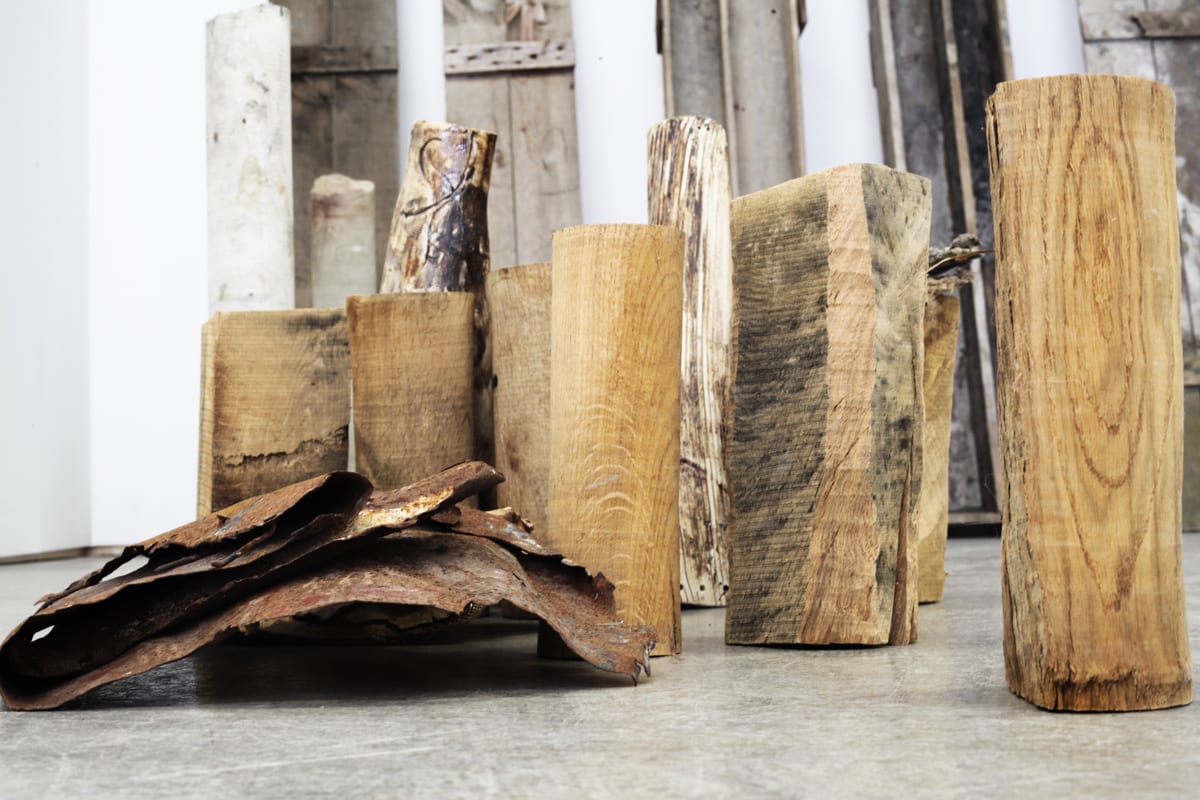
As a mature student I wanted to undertake my MA Fine Art in a challenging but supportive and encouraging environment. I had already had experience of exhibiting and seeking funding for my work. However, I wanted a course that allowed me to extend, develop and establish my own personal direction within a contemporary setting, so that I could produce experimental and challenging work that questioned established values. The 2year part-time MA surpassed my expectations. It’s been very rewarding.
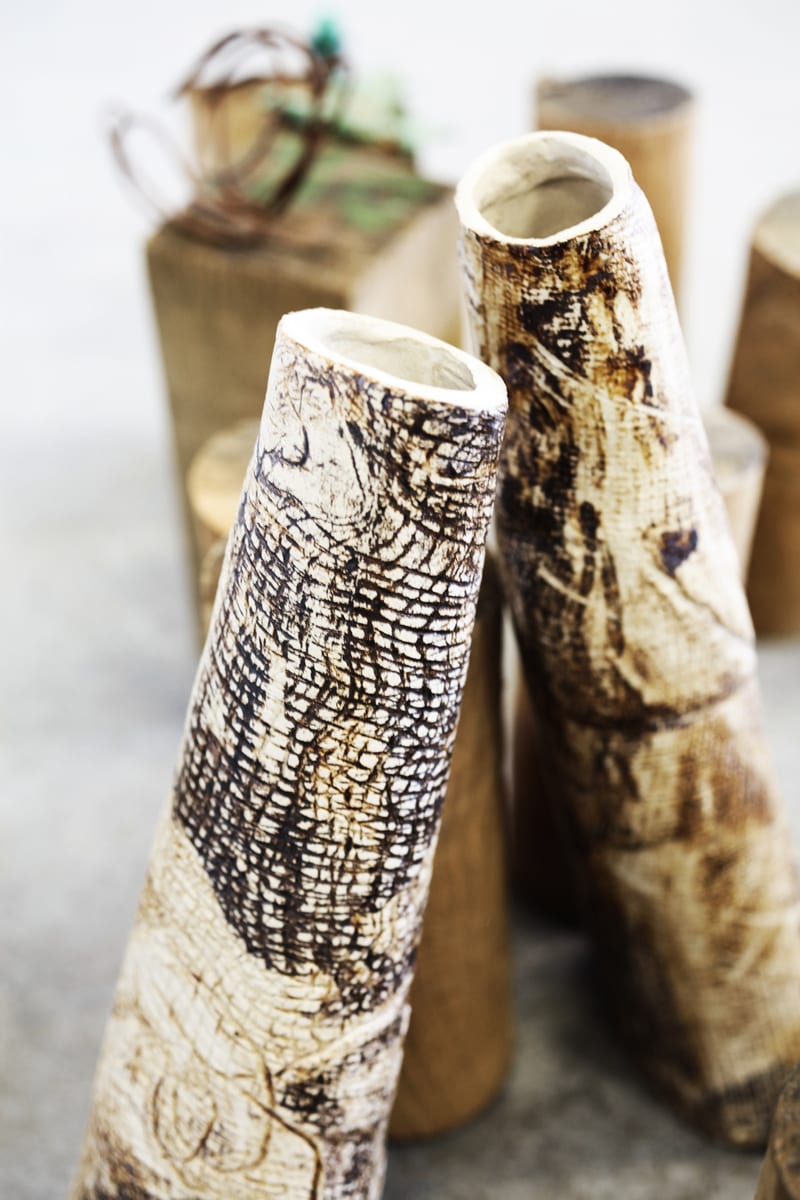
I chose the University of Lincoln because, although it is a fairly new University established in the late 1990’s, it is recognised as renowned for its quality of teaching, support and postgraduate work. The School of Art and Design, now part of the University of Lincoln, in particular is well known. It celebrated its 150th anniversary this year, 2013.
The MA Fine Art course is a research degree covering areas of work such as critical report writing, studio practice, exhibitions and curating. Although I was not looking forward to the written element, a tutor encouraged me to find new ways to express myself. This was hugely enjoyable. The course includes regular group and individual tutorials which support, challenge and test your ideas and skills to enable you to create innovative art work. Tutors are all practitioners, who are willing to share their ideas and considerable expertise. We also had visiting artists and curators to talk about their work and discuss ours.
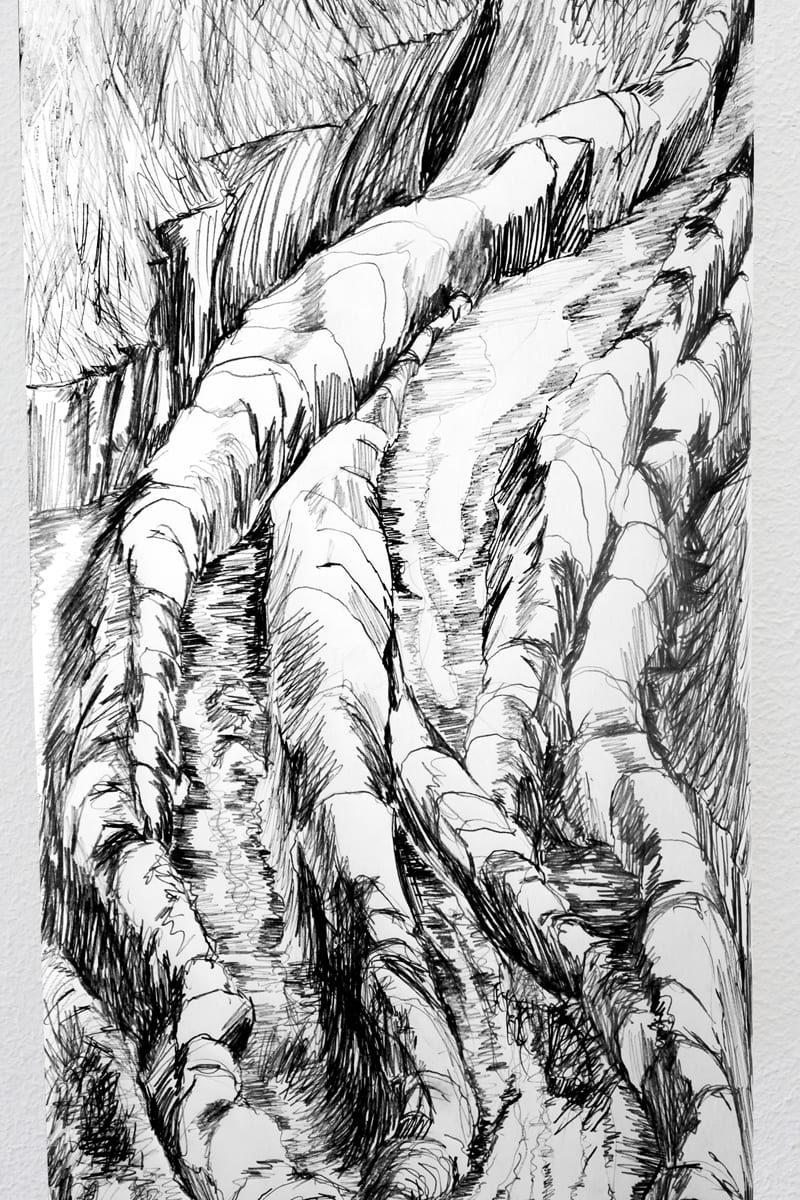
An important area of inspiration for my research concerned the imperatives of conservation and the associated political issues of the natural environment. Over the past 6 years I have been working on different aspects within The National Forest Area in Leicestershire and Derbyshire. This 200 square mile swath of land in the middle of England has been mined for coal and minerals, leaving industrial scars on the landscape. 10 years ago the Government set up The National Forest Company, to transform the areas back to a natural environment with forests and open areas for public access.
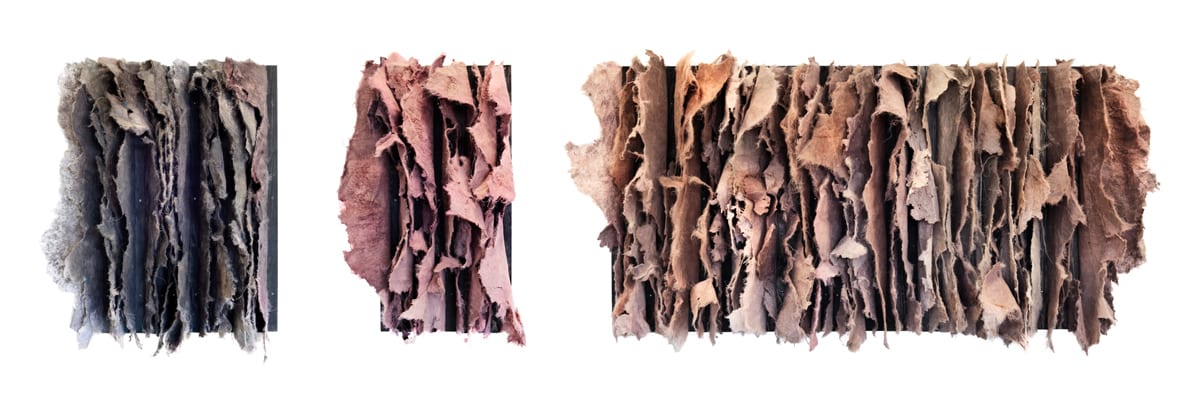
Journeying through The National Forest area today, the transformation and renewal from opencast mine to forest cannot fail to intrigue. For my MA research I chose the Long Moor Site, near Coalville. It was an open caste coal mine which has recently been restored to a natural environment, with a lake and fields, ready for 1000’s of trees to be planted on the Site. My work was in response to those changes.
The mining rubbish and debris left in a heap on the site, provided evidence of its recent past. For example, I found pieces of chewed matting, which I dragged off the Site. The University of Lincoln Conservation Studies analysed it for me and found it to be a geotextile matting made from a polymer, used to stabilize the mining road. Matting was dyed by the soil and was inspirational for my art work. From this I’ve created a long textile piece of work in subtle earth colours in the form of a landscape.
Another aspect, that inspired me was found in a farm next to the site, where UK coal had left 1000’s of core samples in boxes from the area. I was fortunate to be able to acquire a number of them, which I’ve used for an installation.

Following my MA, I’m continuing to work with g8artists.I have been asked to create an installation in the forest area near a disused mine. In addition, I hope to add creative pieces of my work within a mining museum, to provoke the visitor to notice and consider contemporary art in this setting. In 2014, the group has 2 exhibitions planned, supported and funded by The National Forest Co.

The MA has inspired and encouraged me to approach galleries in London and elsewhere. I had my final exhibition professionally photographed and a new website which enables me to show quality images of my work for galleries, art competitions and funding opportunities.


